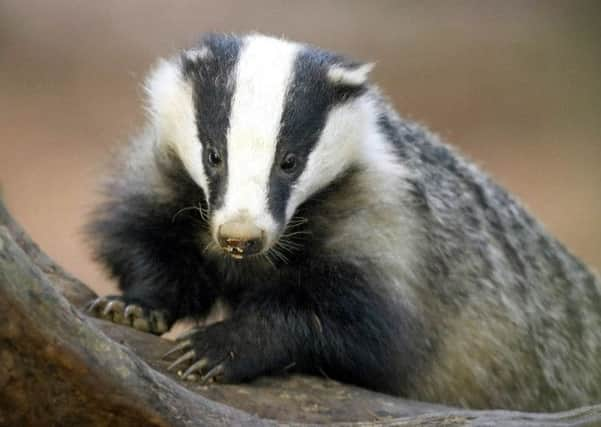‘Plans to vaccinate badgers must go further’


As the second pilot badger culls got underway in Gloucester and Somerset to help drive TB out of the countryside, the National Beef Association (NBA) criticised the Government’s new Badger Edge Vaccination Scheme for failing to extend further north.
Chris Mallon, the NBA’s chief executive, told The Yorkshire Post that the M62 should be considered the “Hadrian’s Wall” to the disease travelling north.
Advertisement
Hide AdAdvertisement
Hide AdHe said: “We believe there should be a corridor of vaccination in South Yorkshire and South Lancashire. Vaccination needs to be in the clear areas to stop the spread of TB.
“The vaccination scheme area doesn’t go far enough. In the edge area we are seeing a lot of TB so we have to provide safety beyond that and I think that area up to the M62 is the right place.”
The Department for the Environment, Food and Rural Affairs (Defra) announced its support of badger vaccination projects in areas outside the bovine TB high risk area last week. The South West of England and Wales are considered high risk areas and the edge area extends north to Cheshire and Derbyshire, falling short of Yorkshire.
The scheme is designed to create a buffer zone of healthy badger populations.
Advertisement
Hide AdAdvertisement
Hide AdIan McGrath, a Cheshire-based farmer who is a member of the national TB Eradication Advisory Group, said he would like to see badgers in areas on the outside of ‘edge’ zones vaccinated.
“The evidence suggests Cheshire badgers are infected which makes for the discussion where further north should badgers be vaccinated? Lancashire is protected from Cheshire by a barrier of ‘horses and houses’. Across to the east of Greater Manchester there is a low density of cattle and a large urban area which acts as a natural barrier to the disease’s spread through the countryside.
“South Yorkshire is slightly different, it has the geographical protection of moorland and again, a low cattle density. But ideally, we would vaccinate badgers north of where badgers are infected and the east of Manchester and South Yorkshire would be the right place to start.”
Yet vaccinating badgers is costly and time consuming, he said, and so the scheme had to be targeted. He added: “I think we have got to look at the evidence continuously as to where the edge area is.”
Advertisement
Hide AdAdvertisement
Hide AdRichard Pearson, regional director of the National Farmers’ Union, said any scheme had to be well co-ordinated and on a large enough scale to have a significant impact.
More than 230,000 cattle have been slaughtered in Great Britain due to bovine TB since 2008.
A Defra spokesperson said it had measures in place to protect South Yorkshire.
“In areas like South Yorkshire and South Lancashire, which have very little TB, we are continuing to tighten cattle control measures and urging farmers to practise risk-based trading to halt TB spreading between herds.”
Advertisement
Hide AdAdvertisement
Hide AdThe latest badger culls - the second year of the four-year programme - started in Gloucestershire and Somerset yesterday.
Last year the culls in the two counties failed to kill 70 per cent of badgers by free shooting - the proportion thought to make the cull effective in reducing TB in local cattle.
An independent report by an expert panel into the first year of culls found controlled shooting to be ineffective and inhumane.